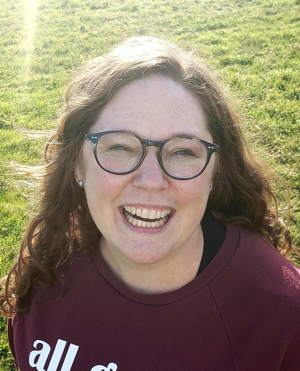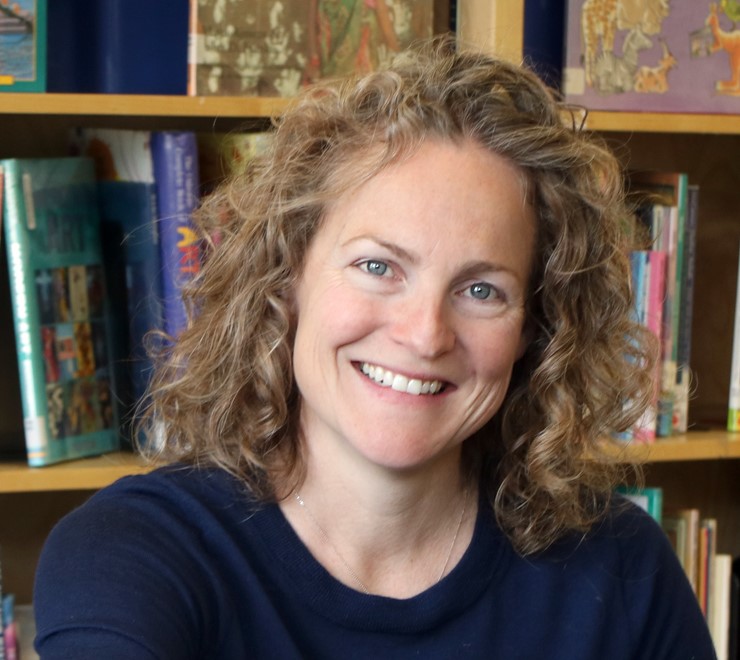
By Lila Armstrong and Sarah Coull
Sarah and Lila first met in May 2021, when Lila reached out to discuss job postings with Sarah. When Sarah moved to a new school site for the 2021-22 school year, Lila accepted a role that Sarah had previously held. Between them, these two teacher librarians (TLs) have an extensive variety of teaching experience. Currently, Sarah shares her time between an elementary school library learning commons (LLC) and the local distance learning school library. Lila shares her time between a secondary school LLC and the Learning Resource Centre (LRC).
The Learning Resource Centre is our district resource library. Hands-on learning kits, curated book sets and professional resources circulate by the thousands on an annual basis. The LRC provides teachers with the opportunity to have an immense amount of new, interesting and curriculum-based materials in their classes. Remote schools, and smaller rural schools are able to access materials and have the kits/books/teaching resources delivered to their schools via the district delivery.
Last year, a series of medical events in other positions called for Lila to move full time to high school and for Sarah to return to the LRC (scheduling just worked out magically here!). We did this back and forth switch twice during the year and in doing so, discovered that we worked really well as a team. Sarah and I were able to pick up seamlessly from the stacks of ordered books and kit creation notes that one of us had left for the other as the year progressed. We talked frequently about next steps and wove our ideas together to extend our thinking. These work transitions were celebrated with emoji-filled texts, phone calls about ideas, what to build next, how to repurpose older kits and how to find resources that were appropriate for our immersion and late immersion students. Sarah and I discovered that we shared similar passions and built a deep level of trust over the year. Since that auspicious first meeting, we have had even more times to work together on shared projects. It was a delight to realize that we were more than colleagues, more than friends, we were collaborators!
The Collaborative Process
Collaboration in the world of teacher librarians can take many forms. Fundamentally, it means shared thinking, shared planning, and shared creation, all working in harmony toward a common goal of fostering a dynamic and responsive collection for our teachers and students. However, we find this basic definition falls rather flat, when considering the nuanced dynamic of a true collaboration.
We began a new project at the LRC through a mentorship district program. Sarah’s time at the LRC brought years of on-the-job knowledge, kit creation and teacher support. Her role in this project would be to share her thinking during resource curation and to help identify curricular gaps in the novel collection. Our project was narrow in focus and achievable. It could have an impact on students by the new year if we were thoughtful in our project management.
Our Goal: Overhaul the Book Sets
In years past, book sets were purchased in sets of 10, sometimes 20, if the titles were popular. The LRC had the French versions of popular juvenile fiction, and many more that were proving to be hard fits in current classrooms. To be fair, sourcing adequate French immersion novels is not an easy task, and we appreciated that as the collection got built, access was a major constraint. Also, the focus in current years has been improving science and social studies resources.
Shared Thinking
In contexts beyond this story, we are growing a history of excellent professional thinking together. It is not rare for a simple comment to grow into a full-blown brainstorming session. We are ideas people: Lila’s brave ideas are radical and exciting and Sarah’s ability to articulate thinking and her vivid imagination come together for truly exciting conversations. We play off each other’s ideas, each taking the lead when our expertise shines the brightest. Conversations are critical, honest and safe.
Our first mentorship session started off with a conversation about our goals with this project and how we could plan our days together to maximize our success. However, as we moved deeper into the project, we began to shift towards a collaborative model of work. We were analyzing a critical element of the collection, trying to understand why some novels were popular with teachers while other, excellent titles, languished on the shelves. We surveyed teachers and assessed each title and its role in the collection. This led us to understand that teachers would appreciate better curriculum connections with the book sets and more differentiated texts. These insights helped us grasp a deeper understanding of the vision for the collection so we could weed and purchase accordingly. In questioning our own assumptions and inviting different perspectives, we were able to embrace a new way of thinking about the project.
Sarah looked to the curriculum to identify major themes and strands in the intermediate grades where we could focus our energy. With her list in hand, and the book circulation history, we began to weed the book sets. Some books that were on the chopping list were saved because of the easy verb tenses or curricular connections we had not considered before. Some were weeded because we could find no connections and felt that the texts were weak learning tools. We identified some terrific Indigenous authored texts that would be very difficult for elementary students to understand (that will be our next project together!) and considered ways to blend stand alone titles into a kit to create multiple perspectives about the same topic. By lunchtime, our weeded pile exceeded the size of the remaining collection.
Shared Planning and Creation
Shared planning is where our different professional experiences and ideas come together. Sarah’s time in the LRC in years prior gave her historical knowledge, and methods to better support teachers – driving use of the resources. Lila’s years in elementary immersion, and now two years in high school provided her with a new understanding of how teachers use resources K-12. Together, we were able to consider the varied logistics of our project and critically plan for student and teacher success. Our planning is intense – it involves sticky notes, note pads, multiple printed reports, a mess of research and dozens of open website tabs on our laptops – ideas are everywhere as we curate each resource. Our process is messy but iterative; our thinking is flexible as we consider all opportunities, keeping some plans and leaving others.
Bringing our ideas to life is one of the most exciting parts of the collaboration. Crafting innovative solutions using the ideas and insights from our planning brings about unique and interesting outcomes.
We worked our way through a lot of printed material! We sourced and built three new kits to teach graphic novels. We planned for four new mixed early chapter book class kits, with books that have verbs in the present tense, generous line spacing, illustrations and games for students ready to leap into starter novels. One particularly magical moment came from a flip through the discard/pass along pile. Sarah had combined two dinosaur kits into one at the end of last year, so we had 30 dinosaur books with no home. When I opened them up, I discovered that they were written in large print, simple sentences in the imperfect tense. Sarah thought of a fun name for the new kit and we were off! We connected it to the curriculum and re-crafted these dinosaur books into a stepping stone kit for teaching and practicing the imperfect in a fun, unexpected way.
The heart of our collaboration lies in our ability to draw out excellence and joy from each other. And this is what makes a truly fruitful collaboration shine beyond the basic scope of shared thinking, planning and creation. Our dynamic partnership has consistently encouraged us to excel.
In our experience, when we work with a colleague towards a common goal in a challenging and trusting environment, we find ourselves eagerly striving for excellence. The result of this is the creation of something beyond what one of us could have made alone. Calling out excellence in one another is not just about personal success; we both grow as individuals and professionals as we push our thinking together. For us, collaboration has been a profound and exciting partnership that nurtures curiosity, encourages critical thinking, and celebrates diverse thoughts and expressions. We have experienced the joy of bringing our collaborative ideas to life, the satisfaction of solving complex problems together, and the pride of making a positive change for our teachers and students.
Although this particular mentorship and collaboration project has come to an end, our thoughtful conversations continue to enliven us and hope to spark more collaborations in the future.


Sarah Coull is a teacher librarian on Vancouver Island, BC, in the Comox Valley School district. With a fervent passion for lifelong learning, she works to make the library the heart of the school, fully integrated into the learning community. Sarah is a bread baker an avid reader and spends her time hiking, skiing and swimming in the stunning Comox Valley.

Lila Armstrong is a teacher librarian in Courtenay, BC, SD71. She is also an asparagus farmer, beekeeper, and all about learning. She is currently pursuing studies in Educational Leadership. Lila is dedicated to making her LLC vibrant and to growing the strength of the TL group in the district. She enjoys the adventures that come with a farm with her sons, husband and critters.